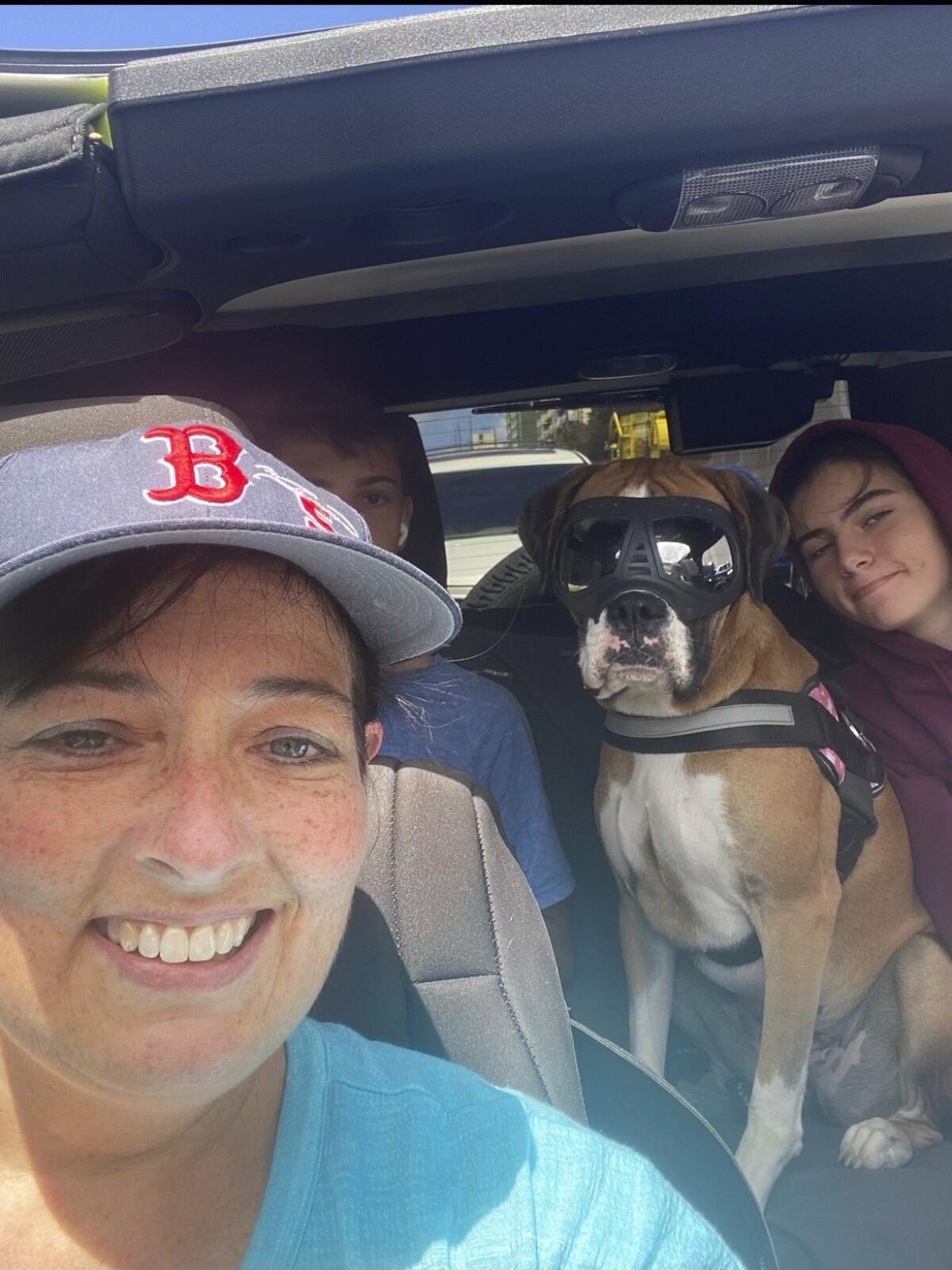Fouled water supply alarms Pearl Harbor military families

- Share via
HONOLULU — Cheri Burness’ dog was the first to signal something was wrong with their tap water. He stopped drinking it two weeks ago. Then Burness started feeling stomach cramps. Her 12-year-old daughter was nauseated.
“It was just getting worse every day,” said Burness, whose husband is in the Navy.
Their family is among hundreds of military families living near Pearl Harbor with similar complaints after the Navy’s water system somehow became contaminated by petroleum.
The problems have afflicted one of the most important Navy bases in the world, home to submarines, ships and the commander of U.S. forces in the Indo-Pacific region. The issues may even threaten one of Honolulu’s most important aquifers and water sources.
The Navy said Thursday that tests had identified petroleum in its Red Hill well, which taps into an aquifer near the base. Rear Adm. Blake Converse, Pacific Fleet deputy commander, said at a town hall meeting that the Navy took this well offline Sunday because it was the closest well to affected housing areas.
Converse said the Navy will flush clean water through its distribution system to clear residual petroleum products from the water. The process, followed by testing to make sure the water meets Environmental Protection Agency standards, could take four to 10 days, he said.
The Navy will also investigate how contaminants got into the well and fix it, he said.
The crisis came after the Navy on Nov. 22 said a water and fuel mixture had leaked into a fire suppression system drain line in a tunnel at a massive fuel storage facility three miles inland of Pearl Harbor. The Navy said it removed about 14,000 gallons of the mixture, and said it hadn’t leaked into the environment.
The Navy said it’s received calls about a fuel odor or physical ailments from 680 homes in Navy housing and 270 in Army housing on the Navy’s water system. The system serves 93,000 people.
Burness said that in the days after Thanksgiving her daughter felt so sick she didn’t want to eat any leftovers, including vegetables that had been boiled in water. On Sunday, Burness started seeing comments on social media from other military families saying their tap water smelled like fuel. She didn’t smell it, but people told her to turn on her hot water and check. She did and smelled it too.
She told her family to stop drinking and bathing with the tap water and ordered private water delivery for $120 a month. The family has mostly been using plastic and paper plates and eating out.
The Navy has since started distributing bottled water and said Marines would set up showers and laundry facilities connected to clean water.
The Army said it would help affected families move into hotels or new homes and the Navy is working on a similar program. The Navy is also setting up dedicated medical clinics.
Burness said her stomach cramps and her daughter’s nausea have improved. But they are both now having breathing issues.
Burness has been frustrated with the Navy’s response, which she says has been dismissive of families’ concerns. She pointed to a Monday email from the commander of Joint Base Pearl Harbor-Hickam that told residents the Navy was testing water samples but it had no immediate indication the water wasn’t safe. His email said he and his staff were drinking the water.
“All they had to do was say: ‘We see that there’s a problem, we don’t know what it is and we’re going to do whatever it takes to find out and fix it.’ That’s all they had to do. And instead, we got: ‘Nope. Looks good. Smells fine. Bye,’” Burness said.
Navy Region Hawaii, which oversees all Navy installations in the state, said the commander’s email was sent when “numbers of concerns were still very low.”
“Since then, the Navy has aggressively increased sampling, testing, communication to families and others impacted, as well as started response teams of experts to address the issues we all are facing,” the command said in a statement.
The Nov. 22 tunnel leak was only the latest involving the Red Hill Fuel Storage Facility, a complex of 20 underground fuel tanks built during World War II. Environmentalists and Honolulu’s municipal water utility have expressed concerns about the aging tanks since the Navy disclosed one of them leaked 27,000 gallons in 2014.
The tanks sit 100 feet above an aquifer that supplies about a quarter of Honolulu’s water needs, prompting concerns that leaks could contaminate one of the city’s most crucial water sources. This is the same aquifer tapped by the Red Hill well where the Navy just detected petroleum.
Last month, the Sierra Club of Hawaii and other environmental groups called on the government to shut the tanks down.
Burness said her experience has shaken her confidence in the military. During her decades as a military spouse, she says she has always believed in doing whatever it takes to support “the mission.”
“This has destroyed all of that,” she said. “I have zero confidence at this point, and I think this has shown that they cannot be trusted with anything.”
More to Read
Sign up for Essential California
The most important California stories and recommendations in your inbox every morning.
You may occasionally receive promotional content from the Los Angeles Times.










